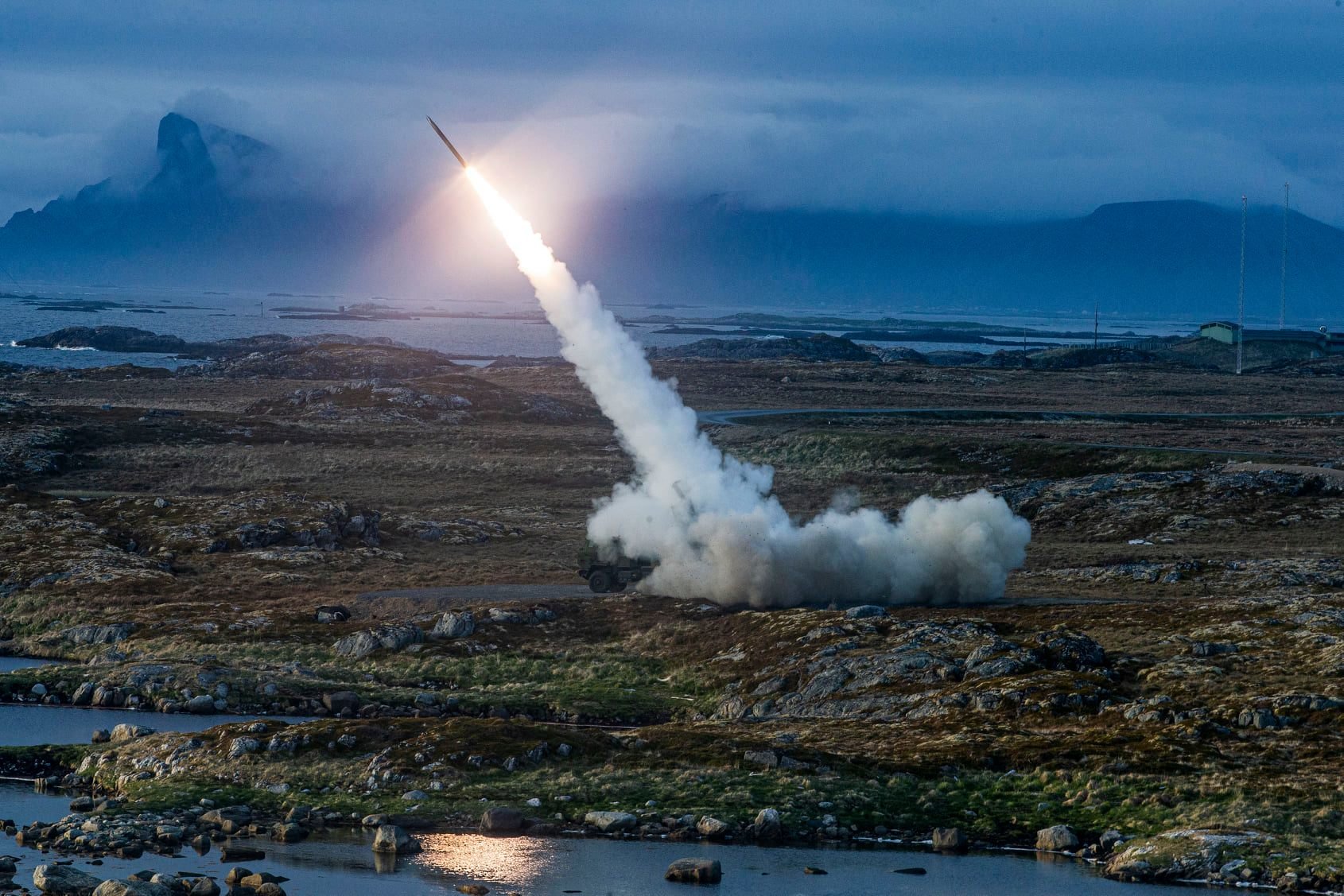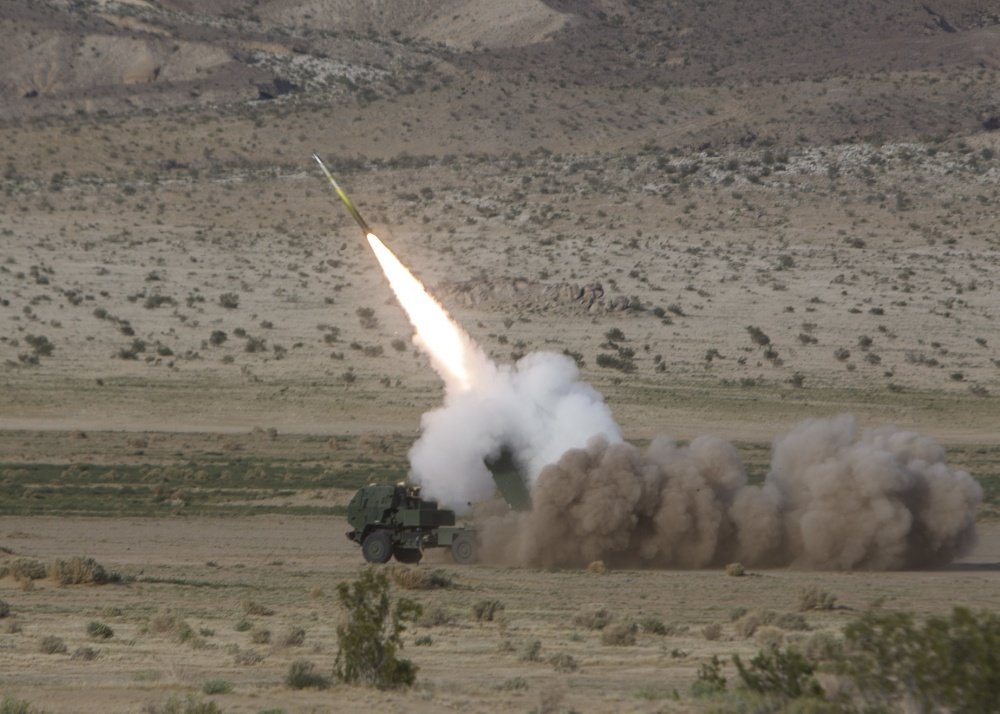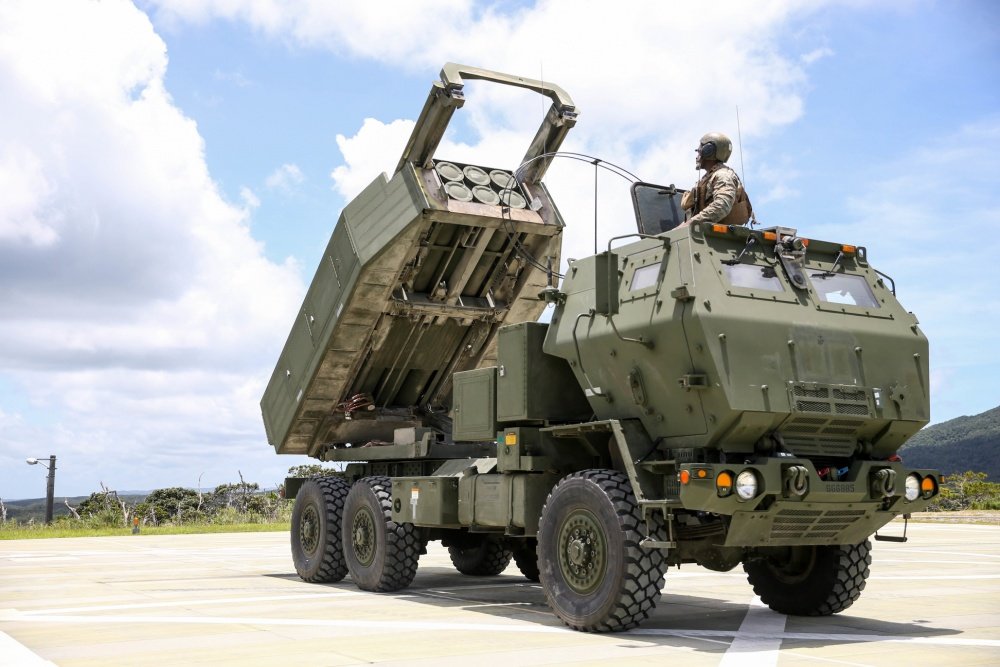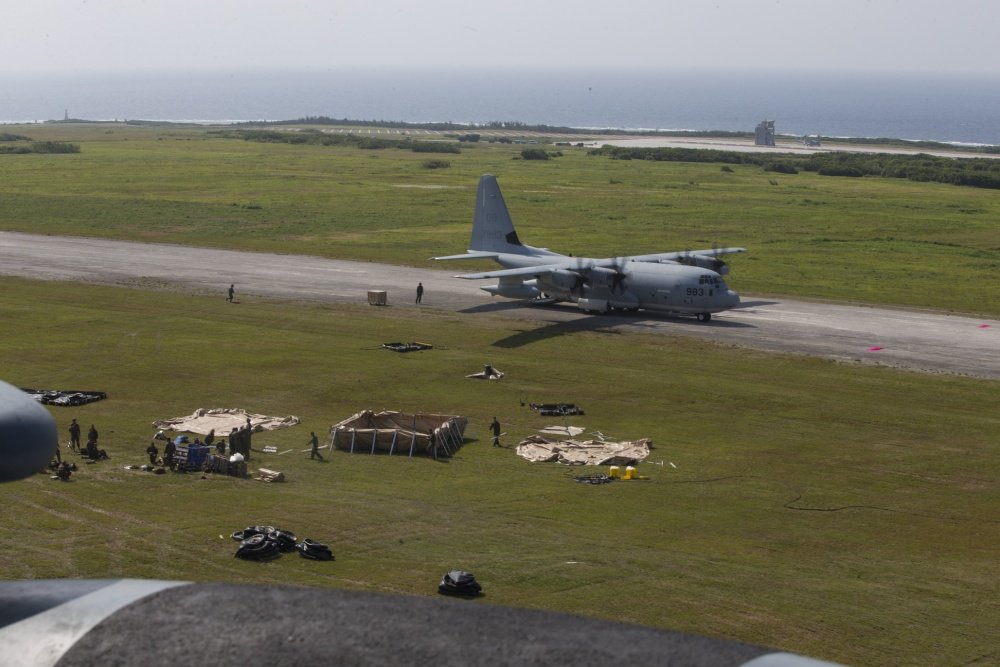
The US Marine Corps 24th Marine Expeditionary Unit conducted its first High Mobility Artillery Rocket System launch in Europe, further integrating the Marines in a joint environment and capitalizing on its strategic lift capabilities. US Marine Corps photo by Lance Cpl. Nicholas Guevara.
Following a budget request in which the Marine Corps is asking for more than 100 guided missiles to deploy with ground units, the service continues to refine the concept of using missile-based artillery to target ships. For example, the 24th Marine Expeditionary Unit recently became the first east coast MEU to deploy with the High Mobility Artillery Rocket System, using HIMARS to test a new concept during a training exercise in Europe.
The integration of ground-launched missiles into the Marines’ warfighting toolkit illustrates how the branch seeks to fight future conflicts, particularly against an adversary such as China — America’s “pacing threat,” according to Marine Corps Commandant Gen. David Berger.

Berger is continuing to shift the Marines toward expeditionary advanced base operations, or EABO, a concept defined as “the ability to target and strike adversary naval and air platforms offensively, and defensively form the nucleus of an active integrated maritime defense-in-depth.”
HIMARS and other missile platforms will eventually replace much of the legacy artillery systems the Marines currently possess while also giving the service indirect fire capabilities that have both longer range than current artillery and the ability to target an adversary’s ships — a mission the Marine Corps has not historically undertaken.
“That’s a trade I’m willing to make. Where we have to go in terms of capabilities that we don’t have right now, we have to be able to help the fleet commander, or the Joint Force Commander, against a peer or near-peer adversary, and that means things like anti-ship, anti-subsurface capabilities,” Berger said at a Brookings Institution virtual event.
The Marine Corps is currently researching how to integrate HIMARS into its operations, as well as other missile-based weapons platforms, such as the new Remotely Operated Ground Unit for Expeditionary Fires (ROGUE). However, melding these capabilities into the operating forces is seen as key while also leading to tactical adaptations by the Marines.

“As we lean into the future fight, expanding our reach and flexibility by utilizing platforms like HIMARS gives us the ability to facilitate maneuver and freedom-of-movement for friendly forces, and our Allies and partners, while denying our adversaries the ability to do the same,” said Marine Col. Eric Cloutier, commanding officer of the 24th Marine Expeditionary Unit, or 24 MEU.
Although the Marines have used HIMARS since 2008, the system’s primary use has been on land to support Marines in Afghanistan. Using it as part of a MEU is a novel concept, and the Marines are testing exactly how it fits into the new EABO concept, and expeditionary warfare in general.
According to the Marine Corps, the 24 MEU used HIMARS in its exercise in tandem with rapid infiltration, or HIRAIN. Utilizing a “heavy lift” capability, the rocket system is inserted ashore to an expeditionary base where it is rapidly put into service. The HIMARS system is then used to engage targets, whether they are land- or sea-based, quickly loaded back on aircraft, and then removed from the area before an adversary has the opportunity to return fire.

On Friday, the Navy reported that the 24 MEU successfully used HIRAIN as part of the At-Sea Demo/Formidable Shield training exercise in Europe. ASD/FS is the largest live-fire integrated air and missile defense exercise scheduled for 2021 and was conducted by the US 6th Fleet headquartered in Naples, Italy.
While the 24 MEU represents the first East Coast unit to integrate HIMARS on a deployment, West Coast units have regularly tested the concept, too. According to the Marine Corps Times, another successful example of the refined concept occurred in October 2020 when the 31 MEU executed both the EABO and HIRAIN concepts as part of Operation Noble Fury in Japan.
The exercise, conducted between the 3rd Marine Expeditionary Force and the US 7th Fleet, saw the 31st Marine Expeditionary Unit employ only 100 infantry Marines to seize a small airfield while using HIRAIN to fly in rocket artillery. The HIMARS system rapidly engaged targets before being loaded back onto its transport aircraft and flown onward to the next objective.
The small scale of the operation also allowed the Marines to remain undetected, something that could be key in a fight with China.
Speaking about Chinese military capabilities, Berger told The Wall Street Journal, “It is very difficult for them to counter a distributed naval expeditionary force that is small, that is mobile, but has the capability to reach out and touch you.”
Read Next:

James Webb served as a US Marine infantryman from 2005 to 2010, completing a combat tour in Iraq. He’s worked as a freelance writer and photojournalist covering US troops in Afghanistan, and Webb spent more than two years in the US Senate as a military legislative assistant and as the personal representative of a member on the US Senate Foreign Relations Committee.
BRCC and Bad Moon Print Press team up for an exclusive, limited-edition T-shirt design!
BRCC partners with Team Room Design for an exclusive T-shirt release!
Thirty Seconds Out has partnered with BRCC for an exclusive shirt design invoking the God of Winter.
Lucas O'Hara of Grizzly Forge has teamed up with BRCC for a badass, exclusive Shirt Club T-shirt design featuring his most popular knife and tiomahawk.
Coffee or Die sits down with one of the graphic designers behind Black Rifle Coffee's signature look and vibe.
Biden will award the Medal of Honor to a Vietnam War Army helicopter pilot who risked his life to save a reconnaissance team from almost certain death.
Ever wonder how much Jack Mandaville would f*ck sh*t up if he went back in time? The American Revolution didn't even see him coming.
A nearly 200-year-old West Point time capsule that at first appeared to yield little more than dust contains hidden treasure, the US Military Academy said.












